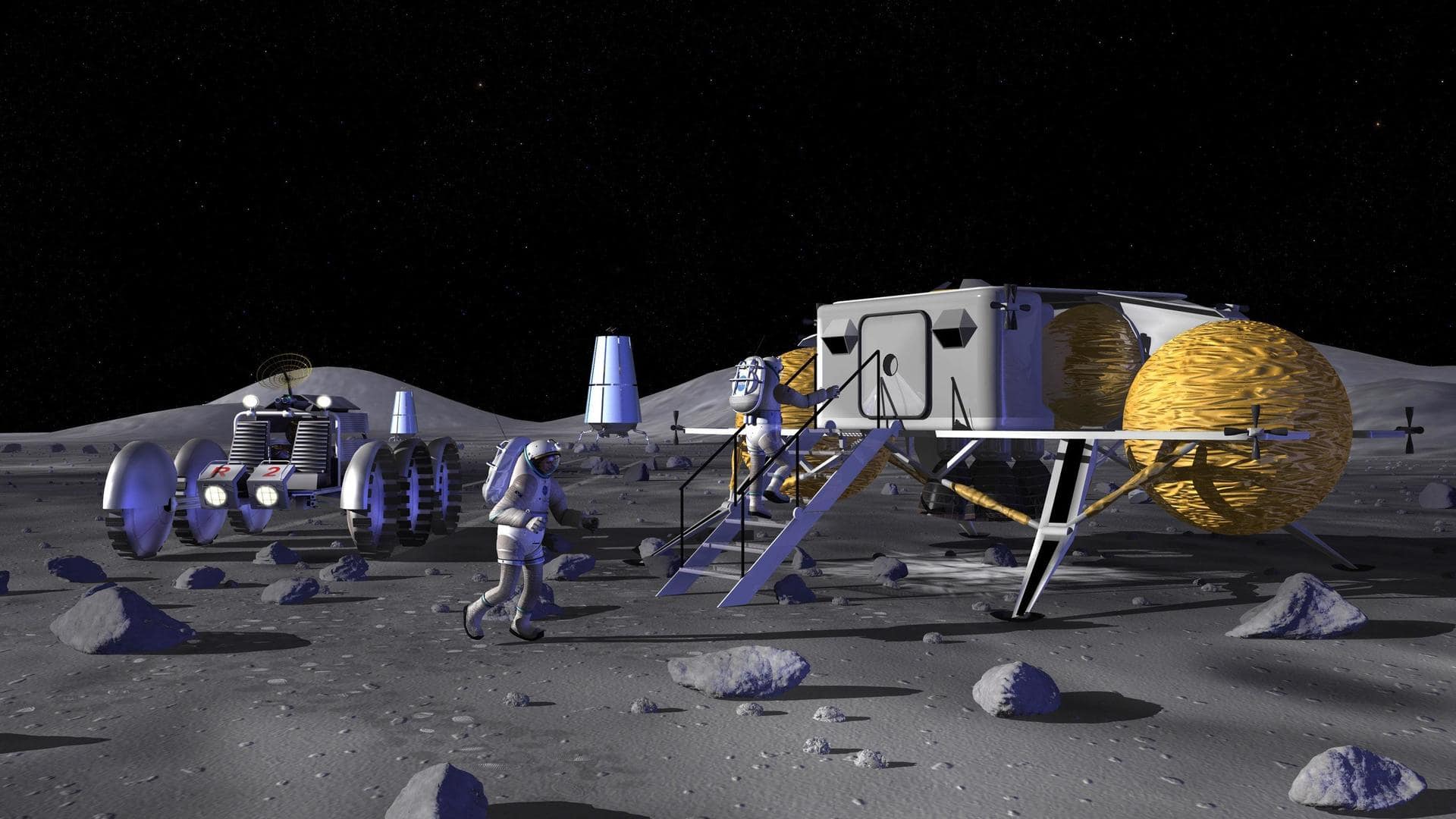
China's journey to the Moon: Major accomplishments and future plans
What's the story
China has an interesting line-up of missions to the Moon in the coming years.
In a recent interview, Weiren Wu, chief designer of the Chinese Lunar Exploration Program (CLEP), revealed plans of landing astronauts on the Moon as soon as 2030.
The country's ambitious space exploration plans also include testing 3D printing technology on the lunar surface as part of future missions.
Official words
Chinese will definitely set foot on the Moon: Wu
"By 2030, the Chinese people will definitely be able to set foot on the Moon. That's not a problem," said Wu in an interview with China Media Group (CMG).
China is now looking forward to starting the fourth phase of the CLEP, after seeing tremendous success with the first three phases.
The CLEP program, in total, comprises four phases of robotic lunar exploration.
Phase 1
China launched its first-ever lunar mission in October 2007
Under CLEP's first phase, China launched its first lunar mission, Chang'e-1, in October 2007. The mission was successful and was intentionally terminated by crashing into the Moon, in March 2009.
The first phase also included another mission, Chang'e-2 which took off in October 2010. This mission's duration was extended to study asteroid 4179 Toutatis, which it accomplished in December 2012.
Phase 2
Chang'e-3 mission is a combination of lunar lander and rover
The second phase of CLEP comprised three missions, the first of which was Chang'e-3, a combination of lunar lander and rover. The mission lifted off in December 2013 and is currently active.
The second mission launched in May 2018, called Queqiao-1 was meant to serve as a communication link with Chang'e-4, which lifted off in December 2018.
Information
Chang'e-4 set record for soft landing on Moon's far side
Chang'e-4 was also a combination of a lunar lander and a rover. The latter was called Yutu-2. This mission set a record for soft landing—the controlled landing of the spacecraft—on the far side of the Moon for the first time.
Phase 3
Chang'e 5 mission brought back 1,731 grams of lunar regolith
The third phase of CLEP included two missions. The first was Chang'e-5 T1, which was launched in October 2014, an experimental flight that was built to test several technologies that would be used on Chang'e-5, which was a lunar sample return mission.
Chang'e-5 launched in November 2020 and this mission brought back 1,731 grams of regolith from the Moon to the Earth.
Phase 4
The fourth CLEP phase could probably be the most interesting
The upcoming fourth phase of CLEP is probably the most interesting of all the phases.
The fourth phase will comprise four missions, the first of which will be the Queqiao-2 communication relay satellite, slated for launch in 2024. Queqiao-2 will play a similar role as Queqiao-1 for the remaining missions under the fourth phase including Chang'e-6, Chang'e-7, and Chang'e-8.
Official words
Chang'e-6 is scheduled to be a lunar sample return mission
The Chang'e-6, Chang'e-7, and Chang'e-8 lunar missions are expected to take off in 2024, 2026, and 2028, respectively.
Chang'e-6 is scheduled to be a lunar sample return mission. It will collect lunar samples from the far side of the Moon and return them to Earth.
If successful, Chang'e-6 will set the record for bringing back samples from the far side of the Moon.
Far side
What is the far side of the Moon?
As a result of the Earth's gravitational forces, tidal friction arises which causes the Moon to become tidally locked. This means the same side of the Moon is always facing Earth, and this face of the Moon is called the near side.
Scientists are particularly interested in the other side of the Moon, or the far side, which is permanently shadowed.
Chang'e 7
What will the Chang'e-7 mission do?
The Chang'e-7 mission, which is expected to take off in 2026, will head to the south pole of the Moon. The mission's main goal would be to look for signs of water on the Moon's south pole.
"We hope to find water there. If water is ever found, it would be great news for human survival on the moon," said Wu.
Chang'e 8
Chang'e-8 will work along with the Chang'e-7 mission
Chang'e-8 will work along with Chang'e-7 to establish the groundwork for the construction of a lunar research station near the south pole of the Moon.
China's lunar base is aimed to help scientists get a better idea of in-situ resource utilization on the Moon, where future astronauts will be able to directly make use of resources present on the Moon.
Information
China is also building a satellite constellation around the Moon
Wu also revealed that China is "building a satellite constellation around the Moon, a system that can provide communication, navigation, and remote sensing services." "After that, we can carry out future deep space exploration," concluded Wu.